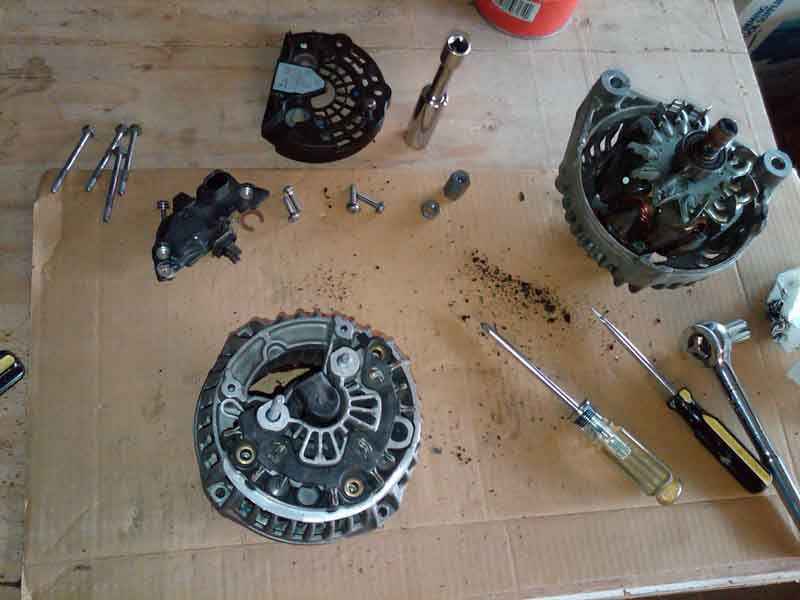Martinjmpr
Wiffleball Batter
Coming home from a camping trip this morning - everything was working fine all weekend, then driving through slow traffic in Fort Collins, I noticed the battery light flashing and the DIC was intermittently displaying a "battery not charging" message. I looked at the dash volt meter and it was showing right at 12v (where normally it's at 14 when driving.) I switched the Scangauge to show volts and it, too showed 11.9 - 12v.
.
Took almost two hours to get home and I watched the SG as the voltage dropped the more I drove. I was hoping the 2nd battery would be able to supply enough voltage to keep me going until I got home since I had the wife, the dog, two kayaks on the roof and was pulling the trailer.
.
By the time I made it home, voltage on the scangauge was showing as 11.3. Parked the trailer, put the truck in a spot where I knew it could stay for a while and shut it off.
.
Took us a few hours to unload and rest and I just went outside to check it. Starter battery is showing 11.8v, house battery is showing 11.86v. No loose connections on any of the battery terminals and the serpentine belt is tight as well- I'm assuming this means it must have been the alternator - what else could it be?
.
I was just going to pull the alternator off this afternoon and take it to my local O'Reilly or NAPA, any reason I shouldn't? (I want to pull the old one because I know they can test it, also I figure they'll hit me with a core charge if I don't have one to turn in.)
.
According to my RPO codes, my 'Burb has the 145a alternator. Any recommendations for a replacement? Any particular brands to avoid? Is there a high output option?
.
Took almost two hours to get home and I watched the SG as the voltage dropped the more I drove. I was hoping the 2nd battery would be able to supply enough voltage to keep me going until I got home since I had the wife, the dog, two kayaks on the roof and was pulling the trailer.
.
By the time I made it home, voltage on the scangauge was showing as 11.3. Parked the trailer, put the truck in a spot where I knew it could stay for a while and shut it off.
.
Took us a few hours to unload and rest and I just went outside to check it. Starter battery is showing 11.8v, house battery is showing 11.86v. No loose connections on any of the battery terminals and the serpentine belt is tight as well- I'm assuming this means it must have been the alternator - what else could it be?
.
I was just going to pull the alternator off this afternoon and take it to my local O'Reilly or NAPA, any reason I shouldn't? (I want to pull the old one because I know they can test it, also I figure they'll hit me with a core charge if I don't have one to turn in.)
.
According to my RPO codes, my 'Burb has the 145a alternator. Any recommendations for a replacement? Any particular brands to avoid? Is there a high output option?

